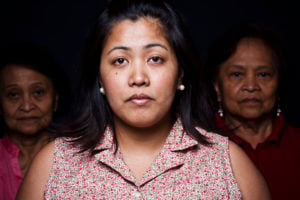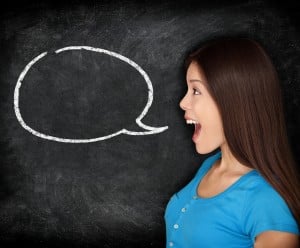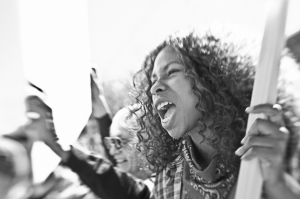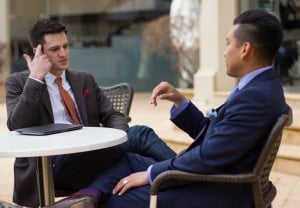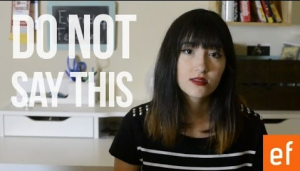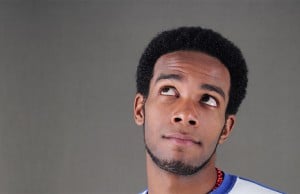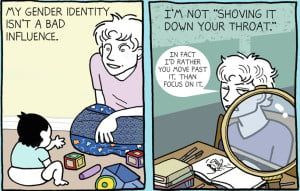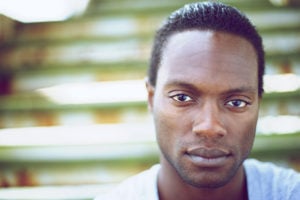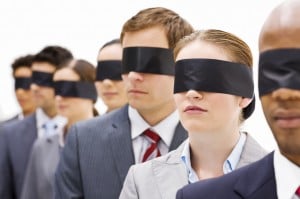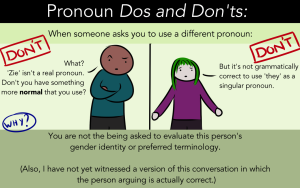(Content warning: rape, sexual assault, victim blaming)
Bill Cosby: Responsible for creating iconic television, or raping dozens of women?
Sean Penn: Exceptional actor and philanthropist, or domestic abuser?
The leaders you admire in your community: People who have a positive influence on those around them, or people capable of causing harm?
If you answered these questions with another question – “Why can’t they be both?” – then you’re on the right track toward understanding the true nature of sexual and intimate partner violence.
The truth is that people can be both well-loved and capable of perpetuating violence. Humans are complex beings, and we’re all capable of both wonderful and terrible things.
But too many of us think in absolutes when it comes to who we believe is capable of perpetrating rape or abusing a partner.
Which means that if someone you know and love has caused harm, you might feel like you have to take one side or the other. Either they’re the wonderful person you thought they were, or they’re a complete monster.
This approach really doesn’t leave much room for recognizing people’s humanity – and that’s a big problem. Because the people responsible for violence in our communities aren’t all monstrous strangers – they’re people we know, people we love, and even people we idolize.
Don’t get me wrong, I’m not trying to sound the alarm and say you should be afraid of everyone you know. But picture this: You hear that someone’s been sexually assaulted, and you wonder what kind of monster could do such a thing.
And then you find out. The perpetrator was your favorite cousin. Or a leader at your church. Or your good friend from college. Or the singer whose music has gotten you through your darkest days.
Now how do you reconcile this information – the news that one of your favorite people in the world is capable of rape – with your belief that only “monsters” are capable of this?
It’s hard to hold the complexity of this truth, so many people fall back on the absolutes. You decide the victim must be lying. Or you feel ashamed and disappointed in yourself for ever believing the rapist had a good bone in their body.
I want to let you know that you don’t have to rely on this absolute thinking.
In fact, because sexual assault and intimate partner violence are complex issues, it’s necessary for us to break out of the binary of believing people are either “good” or capable of violence.
Because the truth is a lot more complicated than that – and when we don’t recognize the whole truth, we can cause a lot of harm and allow the cycle of violence to continue in our communities.
Here’s what happens when we think people are only either saints or monsters.
1. We Blame the Victim Because We Don’t Want to Believe the Abuser Was Wrong
If you believe only “monsters” are capable of rape and abuse, and then someone you can’t possibly see as a “monster” is abusive, what does that leave you with?
Unfortunately, many people turn to victim blaming. It’s a far too common response to sexual and intimate partner abuse in any case, and it can get even worse when the abuser is widely perceived as a “good” person.
If you think the abuser “could never do something like this,” then you may believe the victim must be lying – or that it was their own fault that they were assaulted.
For example, this happens nearly every time accusations of abuse come up against a well-loved celebrity – even when the evidence shows that the accusations are true.
It’s happening right now with Bill Cosby, who’s had dozens of women come forward with similar stories of being drugged and raped, and who even admitted to drugging women for the purpose of “sex.”
This information shatters the public’s image of Cosby, who created iconic television shows and graced so many of our living rooms as The Cosby Show’s wholesome Dr. Huxtable.
And as such, all kinds of doubts and insults are being hurled at his victims.
“Well, she made the choice to go to his hotel room – what did she expect? Why did she put herself in that position?”
“She must be a liar because she didn’t report this to the police sooner.”
“These [insert misogynistic slur here] are just trying to get his money.”
The thing is, the popular image of Bill Cosby is not one of a human being. We’re seeing him as the character he played on television, as the person who enriched countless lives with his work.
As with any celebrity, we don’t see the whole picture of who he is. So regardless of whether or not you feel there’s enough “proof” that he’s a rapist, the fact that he’s widely loved and admired doesn’t rule out the possibility that he could be.
Rape and abuse are never the victim’s fault. When you perpetuate the lie that they must be at fault if the perpetrator is well-loved, you hurt all survivors.
2. We Put the People We Admire on a Pedestal and Refuse to Hold Them Responsible
Bill Cosby is not the only one widely believed to be incapable of doing wrong. Oftentimes when we idolize celebrities, we think of them as flawless.
Which can be pretty harmless if it just means believing they’re the best in their field – but it gets detrimental if you believe their flawlessness means they’re incapable of causing harm.
The same is true for people in our communities.
For instance, if you admire a leader who’s fighting injustice in your community, it makes sense to want to think that they can do no wrong. For you, they may symbolize the possibility of liberation, hope for change, and the creation of a new world in which we’re free from violent oppression.
So it can be utterly devastating to learn that that person is responsible for violence. You may feel like you have to deny that they could ever do such a thing in order to hold on to hope for the future.
But it’s important to remember that when a person is put on a pedestal as a symbol of hope, they’re being treated as just that – a symbol. Seeing people as “perfect” means you’re not seeing them as human.
All of us are capable of causing harm – even those of us in social justice communities.
To really interrupt the cycle of violence, to make space for healing and prevent it from happening again, we have to be willing to see each other as human beings and to hold each other accountable when we do wrong.
When it’s a leader in your community who has caused harm, you may be able to help change harmful norms of turning against survivors and minimizing the harm of abuse.
By centering the survivor’s needs even when you admire the attacker, you can show your community what it means to support survivors and hold people responsible for causing harm. You can help make space not only for the survivor’s healing, but also for the abuser to change and for you and the people around you to heal from the collective trauma of violence in your community.
Our leaders are not infallible – and holding them accountable for their own wrongdoing gives us actual hope for change.
3. We Miss the Chance to Put Into Practice What Justice and Accountability Really Mean
You may hesitate to hold beloved leaders accountable if you think accountability means completely villainizing someone who’s done wrong. So let’s get more realistic about what justice really means.
Many people wish ill on those responsible for violence – and you may agree that a person who’s hurt someone deserves to have the same done to them.
For instance, it’s not uncommon for someone to ignore prison rape as an issue of violence, because they believe incarcerated folks are bad people who “get what’s coming to them” if they end up as victims of sexual violence.
But would you wish such a thing on a loved one? For example, you might not want to consider a relative a rapist if you equate “rapist” with “someone who deserves to be raped in prison.”
True accountability – the kind that can foster positive change and healing – doesn’t look like violent vengeance. Holding your relative accountable doesn’t have to mean you stop loving them, never speak to them again, or wish for horrible things to happen to them.
You can be angry, horrified, and disgusted about what someone’s done – and still treat them with the dignity that all people (even those who have done wrong) deserve.
Being close to someone who’s caused harm means you can understand their fully human complexity. They’ve done an awful thing, but you know that they’re also capable of doing good.
So holding them accountable can look like supporting them to be their best self, guiding them to recognize what they’ve done wrong, and helping make sure they respect what the survivor needs to heal.
This doesn’t mean you’re excusing their abusive behavior. In fact, you’re holding them to a higher standard, letting them know that you, as someone who loves them, expect them to do better.
Responding to violence with violence can actually cause more trauma and rip communities apart, rather than providing healing.
It’s possible to center a survivor’s need for healing and justice and still have love for the person who has abused them.
If the abuser refuses to be accountable or you just can’t have them in your life after they’ve been abusive, you can set the boundaries you need for your own wellbeing – it’s also possible to do that without believing that they’re nothing but a monster.
4. We Oversimplify the Meaning of Consent
It would be easier to fit people into the binaries of “good person” or “rapist” if consent were a simple concept. But consent can be pretty complex.
If you only associate rape with the image of a menacing stranger attacking a screaming victim in the dark, then you might have a hard time picturing someone you admire as that person.
But that’s not the only way to violate consent, and it’s actually a lot more common for people to be raped by someone they know.
The “stranger in the dark” trope leaves out sexual assault that includes things like coercion, intoxication, or taking silence as permission. And if you think of the stranger trope as the only form of rape, you’re also forgetting examples like date rape, partner and marital rape, and statutory rape.
Whoopi Goldberg demonstrated this dangerous attitude when she discussed director Roman Polanski, who pleaded guilty to drugging and raping an unconscious 13-year-old girl.
“It wasn’t rape-rape,” she said, trying to argue that he was charged only because of the girl’s age, and implying that this makes his actions are more excusable.
It takes some reaching to try to justify any form of sexual abuse, but Whoopi showed that when someone admires the perpetrator, they might try to do just that.
As a 43-year-old man protected by wealth and fame, Polanski had an enormous amount of power over his victim, so the girl could not consent.
Sexual assault is not just a matter of physical force – we need to have a deeper understanding of how it works, including the influence of power dynamics.
In between the binaries of “someone who would violently attack a stranger” and “someone who’d never do such a thing,” there are many more possibilities for how sexual assault can take place. It could include pressure, manipulation, and more.
The “Monster Myth” of rape includes the belief that rapists are only people we can identify as abnormal or weird – not someone you’d consider “normal.”
But a person who violates a victim’s consent could very well be someone you think of as “normal” – they could even be someone you admire. We have to include this possibility in our understanding of sexual violence.
5. We Oversimplify the Nature of Partner Abuse
As a society, we also like to think we can easily spot people who are abusive to their partners.
What comes to your mind when you think of domestic violence or intimate partner violence? The most common image we see in the media is of a man physically abusing a woman in a violent rage.
We think we can identify abusers as “bad” people, and eradicate intimate partner violence with slogans as simple as “Real Men Don’t Hit Women.” We say things like “I’d never let a partner hit me,” and we wonder why people being abused by their partners don’t “just leave.”
All of these ideas make excusing intimate partner violence pretty easy when the violence doesn’t neatly fit that picture of what we think partner abuse is “supposed” to look like.
So if it’s hard to think of someone you love as an abusive monster, you might believe the myths that would eliminate that possibility.
Say it’s your friend who’s been abusive, but they’re queer and you think partner violence “just doesn’t happen” in queer relationships (it does). Or their partner is still with them, and you think that if someone stays with an abusive partner, that means they’re not really being abused (it doesn’t). Or your friend has never been physically violent, and you think that’s the only form of partner violence (it’s not).
Intimate partner violence can take forms including emotional abuse, sexual abuse, and financial abuse. It can be kept hidden, no matter what form it takes. It can happen to people of any gender, sexual orientation, race, economic status, and more.
And intimate partner violence is a pattern of power and control – which is a big key missing from society’s common ideas of what abuse means. Partner abuse can escalate over time, and an abuser can maintain power in subtle ways.
In other words, it’s impossible for you to judge whether or not someone has been abusive based solely on your impression of them as a “good” or “bad” person.
Once you let go of society’s inaccurate stereotypes about abuse, you can understand that even a friend who is kind to you can be controlling in their romantic relationship(s).
And you could be in a position to help that friend recognize what they’re doing and learn how to stop.
6. We Blame Ourselves If It Happens to Us
Survivors of rape and abuse can internalize the belief that people are only “monsters” or “saints” – which is one of the most damaging results of this idea.
If someone you’re close to has abused you, you’re not the only one.
For many survivors, this scenario is familiar: You believe rapists and abusers are people you can identify as “monsters.” You’ve surrounded yourself with people you can trust, and you believe you make good choices to keep yourself safe.
And then one of the people you trust – a classmate, a partner, a date, a leader in your community – abuses you.
To make sense of this situation, you turn to self-blame. Since your attacker is believed to be a good person, you think you must be the one who did something wrong. Or maybe they were a monster all along – and you think you “should’ve seen this coming.”
If this happens to you, none of these self-blaming messages are true – they’re based on society’s lies that abusers can’t be people we think of as “good” or “normal.”
But as countless examples show, the true nature of sexual and partner violence proves those lies wrong. It’s not your fault if you’re abused, not even if you trusted your abuser. The person responsible is the person who violated your trust.
As a survivor myself, I know from experience that it can be hard to reconcile your idea of someone as a “good” person with the reality that they’ve hurt you.
You might have positive memories with them, reasons you’ve looked up to them, good things in your life that wouldn’t have been possible without them. You might even feel like you wouldn’t be who you are today without their presence in your life.
As confusing as these feelings may be, whatever you’re feeling is perfectly valid. No survivor’s experience fits neatly into society’s narrative of the “perfect victim.”
It’s also up to you to use whatever language fits your experience. If calling your abuser a monster makes sense to you, that’s totally understandable.
And if you’re trying to understand how someone can be both your abuser and the person you once thought of as “good,” that’s possible, too. The truth is complex, and you have power in being able to hold the parts of that complexity that help you get the healing you deserve.
***
Whether you’re a survivor, a bystander, or you’ve been abusive yourself, I understand that it can be hard to hold space between “saints” and “monsters.”
We want to believe in the goodness of people. We want to feel safe knowing that we can identify abusers as “bad” people, so that we’re not vulnerable to being hurt by the people we love.
But when that means hurting survivors or blaming yourself for being abused, it’s not a helpful approach to ending violence.
Understanding that the people we love and admire can hurt us doesn’t mean you have to stop believing in the good in people, or that you have to live in fear.
If we stop thinking in the absolute binaries of “good” people and “abusers,” we can actually begin to free ourselves and our communities from cycles of violence. We can support survivors and stand up for accountability, knowing that healing and change are possible.
I’ve worked closely with many survivors, and as I mentioned, I’m a survivor myself. So I’ve experienced and witnessed the damage that comes with denying people’s humanity by seeing them as all good or all bad.
And I also know that it doesn’t have to be this way. And if we stop thinking in narrow absolutes, we can all get some healing.
[do_widget id=’text-101′]
Maisha Z. Johnson is the Digital Content Associate and Staff Writer of Everyday Feminism. You can find her writing at the intersections and shamelessly indulging in her obsession with pop culture around the web. Maisha’s past work includes Community United Against Violence (CUAV), the nation’s oldest LGBTQ anti-violence organization, and Fired Up!, a program of California Coalition for Women Prisoners. Through her own project, Inkblot Arts, Maisha taps into the creative arts and digital media to amplify the voices of those often silenced. Like her on Facebook or follow her on Twitter @mzjwords.
Search our 3000+ articles!
Read our articles about:
Our online racial justice training
Used by hundreds of universities, non-profits, and businesses.
Click to learn more
Most Read Articles
- « Previous
- 1
- …
- 30
- 31
- 32






